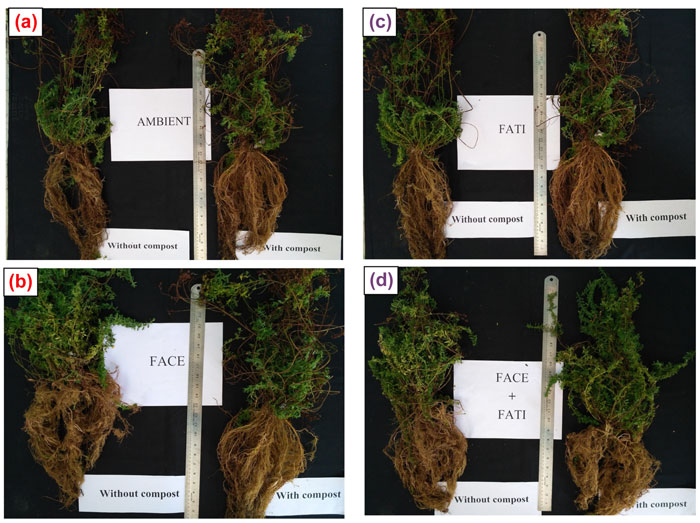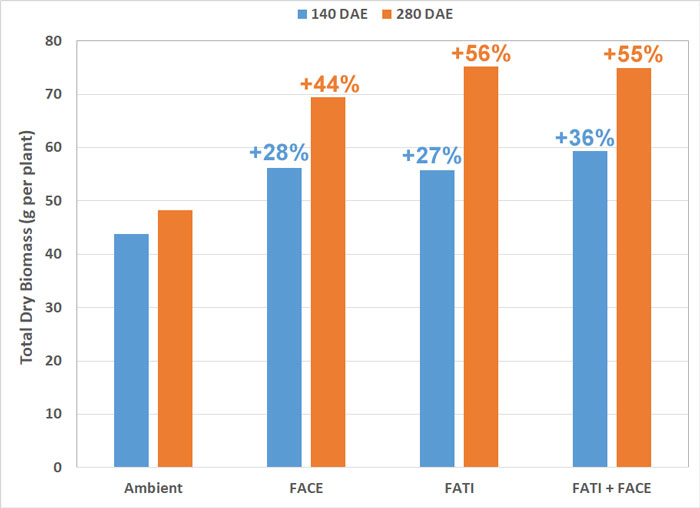| Tweet | Follow @co2science |
Paper Reviewed
Sharma, S., Walia, S., Rathore, S., Kumar, P. and Kumar, R. 2020. Combined effect of elevated CO2 and temperature on growth, biomass and secondary metabolite of Hypericum perforatum L. in a western Himalayan region. Journal of Applied Research on Medicinal and Aromatic Plants 16: 100239.
St. John's Wort (Hypericum perforatum) is an herbaceous perennial plant with an extensive root system. Recently, the research team of Sharma et al. (2020) examined the response of this plant to different treatments of CO2, temperature and compost application.
The work was accomplished at the facilities of the CSIR-Institute of Himalayan Bioresource Technology in Palampur, India. There, across two separate growing seasons, the authors subjected H. perforatum to a full-factorial treatment of either ambient (400 ppm) or elevated (550 ppm, applied during daylight hours only) CO2, ambient (normal air temperature) or elevated (2.5-3.0 °C above ambient) temperature, and no (zero compost added) or full (100 g per pot added at two stages) application of vermicompost. The experiment was conducted outdoors, with the plants grown in large pots in a field setting. Elevated CO2 concentrations and elevated temperatures were achieved and maintained using Free-air CO2 Enrichment (FACE) and Free-air Temperature Increase (FATI) technology, the latter of which was accomplished using infrared heating units. Several growth-related measurements were made at 100% flowering (140 DAE) and seed maturity (240 DAE) stages in each growing season.
Relative to the ambient control treatment, the authors report that elevated CO2, elevated temperature and the application of compost all exerted positive effects on the growth of H. perforatum (see Figure 1). As illustrated in Figure 2, the total dry biomass of St. John's Wort plants were enhanced by 28%, 27% and 36% at the 100% flowering stage and by 44%, 56% and 55% at seed maturity in the FACE, FATI and FATI + FACE treatments, respectively. Consequently, both the individual and combined temperature and CO2 treatments improved the development and yield of H. perforatum.

Figure 1. Growth of St. John's Wort plants grown under (a) ambient temperature and ambient CO2, (b) ambient temperature and elevated CO2, (c) elevated temperature and ambient CO2, or (d) elevated temperature and elevated CO2 conditions, with or without the application of compost. Photographs were takes at seed maturity (280 days after treatment exposure). Source: Sharma et al. (2020).

Figure 2. Total dry biomass of St. John's Wort plants grown under various temperature and CO2 treatments at 100% flowering (140 DAE) and seed maturity (240 DAE) stages. Figure derived from Table 3 of Sharma et al. (2020). The percentages shown in blue and orange indicate the change in total dry biomass (relative to ambient conditions) due to the FACE, FATI and FATI + FACE treatments at 100% flowering and seed maturity stages, respectively. Treatment legend: Ambient = ambient temperature and ambient CO2, FACE = ambient temperature and elevated CO2, FATI = elevated temperature and ambient CO2, and FACE + FATI = elevated temperature and elevated CO2 conditions.




